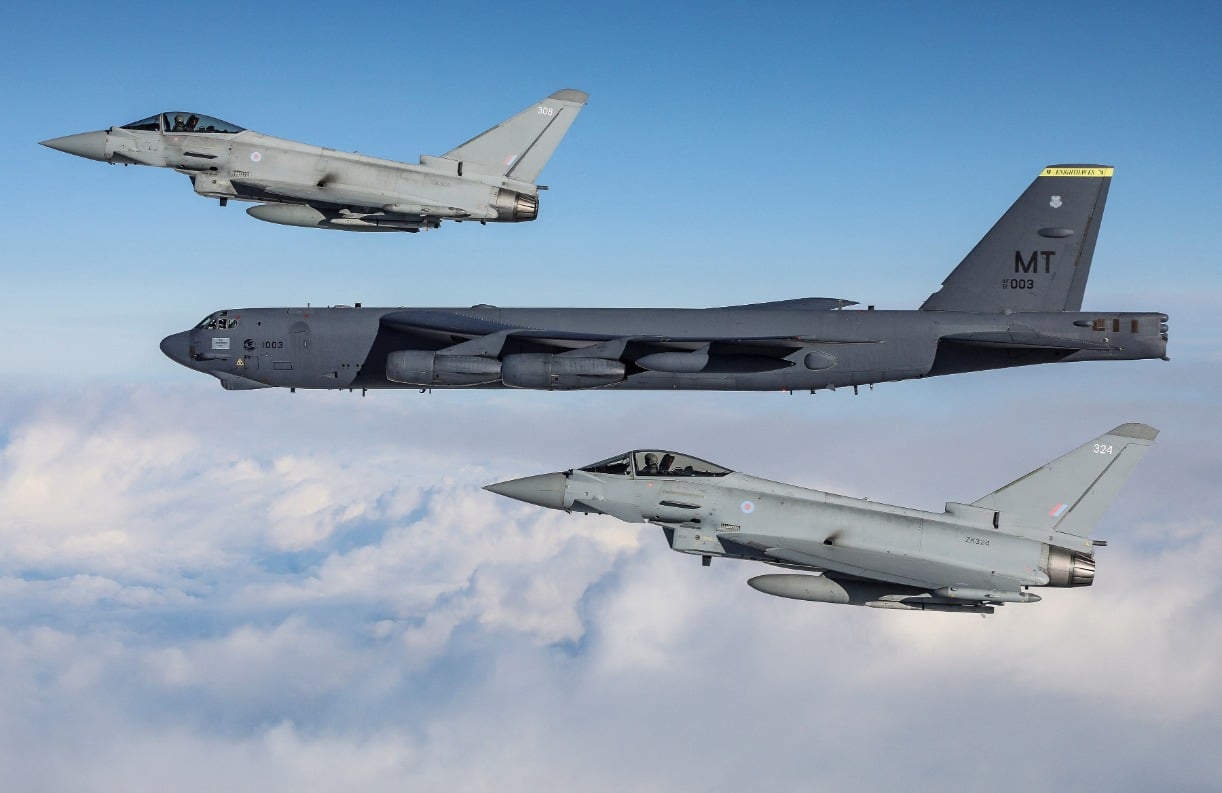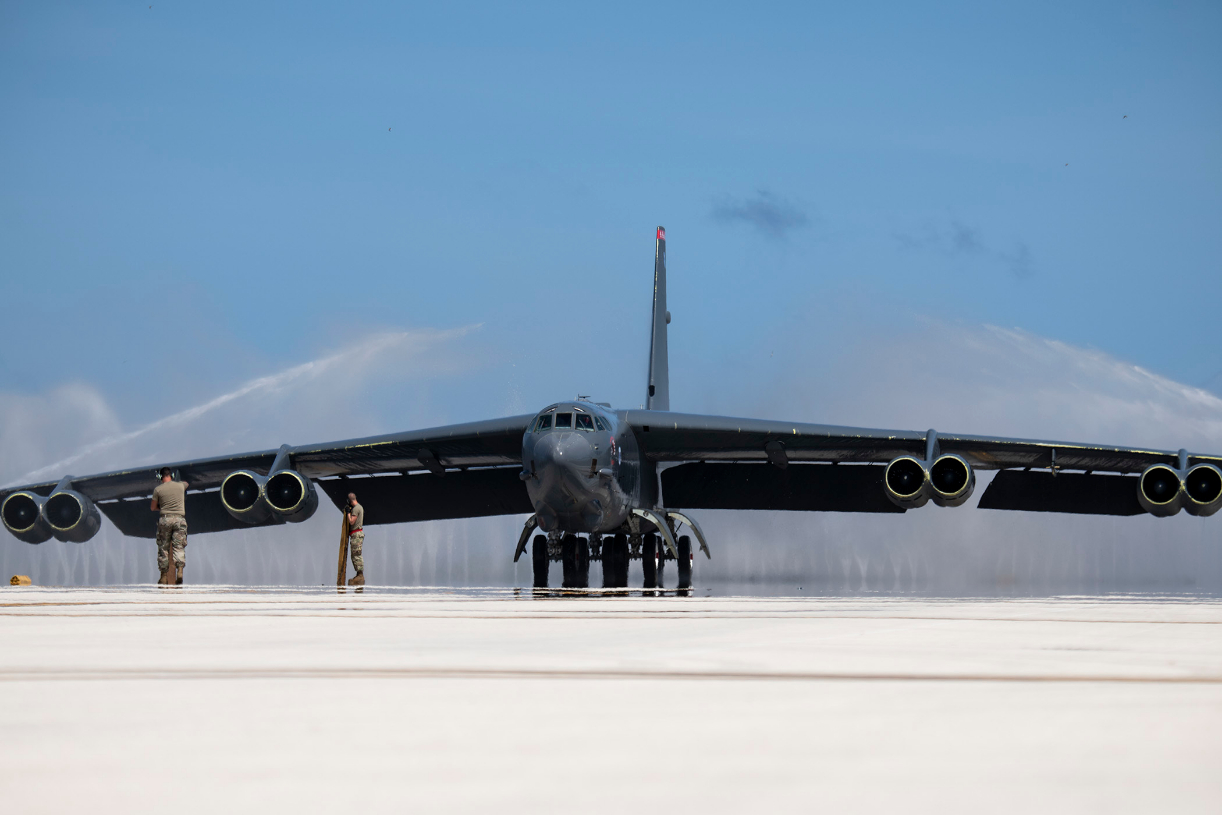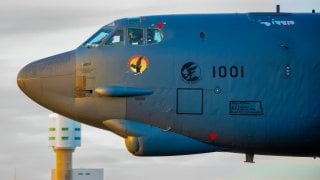B-52: The U.S. Air Force's 'New' Nuclear Bomber? It Could Happen
In response to threats from near-peer adversaries like Russia, some U.S. lawmakers are advocating for the re-nuclearization of approximately 30 B-52 Stratofortress bombers.
Summary and Key Points: In response to threats from near-peer adversaries like Russia, some U.S. lawmakers are advocating for the re-nuclearization of approximately 30 B-52 Stratofortress bombers.

-The B-52s, which have been effective in conventional roles since the New START treaty limited their nuclear capability, may rejoin the U.S. nuclear triad as the treaty is set to expire in 2026. The proposed defense policy bills aim to begin this conversion shortly after the treaty's expiration, with completion by 2029.
-While supporters argue this move is necessary for national security, opponents highlight the high costs and existing investments in the B-21 Raider and ongoing B-52 upgrades.
B-52 Stratofortress: From Conventional Powerhouse Back to Nuclear Deterrent?
The threat from near peer adversaries – notably Russia – is one that some U.S. military officials do not take lightly – and now some lawmakers are pushing that a considerable number of the United States Air Force's B-52 Stratofortress strategic bombers could once again be equipped to carry nuclear weapons. Defense News first reported this week that Congress has begun to layout the groundwork that would see approximately thirty of the Cold War-era bombers returned to their original mission.
The B-52 was designed to carry both nuclear and precision guided conventional ordnance, but as part of the New START arms control treaty, the bombers were converted to carry only conventional ordnance. It should be noted, the B-52 has been effective in that role – first in the Vietnam War during Operation Rolling Thunder, and then during Operation Desert Storm in 1991, where Stratofortress bombers delivered 40 percent of all the weapons dropped by coalition forces.
Return to a Component of the Nuclear Triad
The New START treaty is on track to expire in February 2026, and there is little indication that Moscow would seek to renew it. For that reason, congress is on track to see additional B-52s taking on a role as part of the United States' nuclear triad. Lawmakers in both the House and Senate have introduced defense policy bills for fiscal year 2025 (FY25) that call for the air service to return the nuclear capability to the bombers.
The House bill has called for the U.S. Air Force to begin reconverting the Cold War-era bombers just a month after the New START treaty expires, and to complete the upgrades by 2029.
"The treaty expires in 2026, and the prospect of Russia coming to the table for serious arms control discussions is incredibly unlikely," said House Armed Services Chairman Mike Rogers, (R-Alabama) last week when the amendment to the FY25 defense policy bill was introduced. "We need to be prepared to face a nuclear environment without any treaty limitations."
The legislation passed 217-199 on Friday, with objections from Rep. Adam Smith (D-Washington), the top Democratic lawmaker on the House Armed Services Committee. The Senate Armed Services Committee also passed the bill on a vote of 22-3 on Friday.
He and other opponents to such a move argue it could make it more challenging for Washington to negotiate a new treaty. In addition, the B-52 fleet is already undergoing significant upgrades – which include new Rolls-Royce engines and cockpit updates that coincide with the crew size being downsized from five to four. Critics have added that the B-52 can continue to serve alongside Northrop Grumman's B-21 Raider as it enters service, and there isn't a need for the entire fleet of B-52s to be nuclear-capable.
"The Department of Defense is not interested in doing this," said Smith. "What they're interested in doing is investing in the B-21, which is the next generation nuclear-capable bomber. This would cost a great deal of money. Also, they’re currently trying to extend the life of a number of B-52s out to 2050, which they think they can do. This would be another added expense to that."
The timing of the passage of the bills was also notable, as it was on Tuesday that a new report from the Government Accountability Office (GAO) warned that the engine upgrades to the B-52 – which will be redesignated the B-52J – won't be completed until 2023, three years behind schedule. The government watchdog warned that the delay is due to funding shortfalls for both the new engines and new radar, Air & Space Forces Magazine reported.

While the B-52s are on track to remain in service until the 2040s and possibly later, it would seem that the bombers will finally receive all their upgrades just in time for them to finally be retired!
Author Experience and Expertise: Defense Expert Peter Suciu
Peter Suciu is a Michigan-based writer. He has contributed to more than four dozen magazines, newspapers, and websites with over 3,200 published pieces over a twenty-year career in journalism. He regularly writes about military hardware, firearms history, cybersecurity, politics, and international affairs. Peter is also a Contributing Writer for Forbes and Clearance Jobs. You can follow him on Twitter: @PeterSuciu. You can email the author: [email protected].
All images are Creative Commons.


